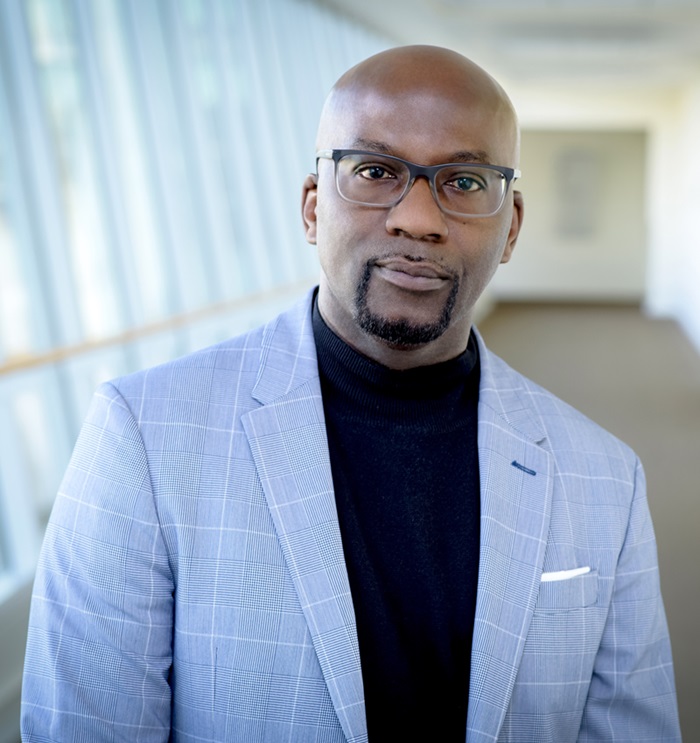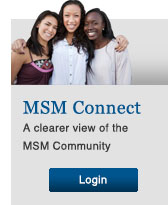Personalized Medicine Is Coming, But Who Will Have Access to It?
Experts warn that new technologies that tailor health care to individuals may exacerbate health inequities.
 Dr. Rick Kittles
Dr. Rick Kittles
Senior Vice President of Research, Morehouse School of Medicine
By Bridget Balch, AAMC News
Editor’s Note: This is the second article in a two-part series exploring the promise and limitations of the field of personalized medicine. The first part focused on advances and innovation in the field.
In the mid-1990s, researchers identified two gene mutations that are key to predicting genetic susceptibility to breast cancer: BRCA1 and BRCA2. In 1996, the BRCA1/2 mutation screening became the first genetic test for cancer risk available as a clinical service.
This genetic screening was an early innovation in a field that has come to be known as personalized medicine, which can be applied across a variety of medical specialties. Its defining characteristic is that a patient’s health care team takes into consideration a wide range of factors — such as genetics, lifestyle, diet, specifics of disease presentation, and living environment — when deciding on an individualized prevention or treatment plan.
With the advent of personalized medicine, including genetic screening as well as more targeted cancer drugs and therapies, the death rate for breast cancer in the United States declined by 43% from 1989 to 2020, according to the American Cancer Society (ACS). But even as mortality from breast cancer has decreased overall, there are statistics that highlight inequities in outcomes. Despite Black women having a lower incidence of breast cancer than non-Hispanic White women, Black women of all ages die from breast cancer at a 40% higher rate than non-Hispanic White women, and Black women under 50 years old die of breast cancer at twice the rate of non-Hispanic White women in the same age category.
Research shows that Black women get the BRCA1/2 screening less often than White women, at least in part because it is offered to them less frequently. One 2017 study found that, of women under 50 years old diagnosed with invasive breast cancer in Florida, 85.7% of the White women in the study were referred for genetic testing, while only 37% of the Black women were.
This is just one example of the inequities that some medical researchers and health equity advocates say severely limit the benefits of personalized medicine, even as technology advances.
“[Personalized medicine] products are informative and are having an impact in certain communities, but it’s not equitable across all communities,” says Rick Kittles, PhD, senior vice president for research at Morehouse School of Medicine, a historically Black medical college (HBCU) in Atlanta.
In the United States, people who are Black, Hispanic or Latino, American Indian or Alaska Native, people with low incomes, people who are uninsured or underinsured, and those who live in rural areas, as well as others who have been marginalized, face multiple barriers to personalized medicine. These barriers include a lack of inclusion of diverse genetics in research, the high cost of genetic testing and technology used in personalized medicine, and a lack of awareness of and education about personalized medicine among health care providers outside of urban medical centers. Some sociologists hypothesize that advances in medical innovation may, in fact, exacerbate existing inequities because people with economic and educational advantage are more likely to access care that improves lives and reduces mortality, while those from marginalized communities are left behind.
It’s a problem that several academic medical centers are seeking to address with a range of strategies, from expanding personalized medicine research at HBCU medical schools to engaging community partners for research recruitment.
Understanding the diversity of human genetics
The field of human genetics has grown exponentially since the 2003 completion of the Human Genome Project, an international research effort that mapped the gene pairs that make up human DNA. The endeavor found that all humans share 99.9% of the same genome, with the other 0.1% accounting for all genetic diversity among individuals. Within that 0.1% are the wide variety of heritable traits, from physical characteristics to genetic mutations that cause or increase risk for certain diseases.
And yet, in the more than 6,000 genome-wide association studies (when researchers scan the genomes of large populations to try to identify genetic variations associated with diseases) that have been published internationally over the last two decades, 90% of all people analyzed were of European descent, according to a 2023 article in the Human Molecular Genetics journal.
This means that researchers have very little understanding of heritable disease risk for the vast majority of the world’s population when it differs from the variations seen in people of European descent.
Kittles, who is a genetic epidemiologist by trade, joined Morehouse School of Medicine in 2022 to lead the medical school’s expanding efforts to advance medical research focusing on the inclusion of people from groups that have historically been excluded from clinical research and underserved in health care.
Among his faculty recruits is Melissa B. Davis, PhD, a genetics researcher focused on racial disparities in cancer who will lead the school’s new Institute of Genomic Medicine. Davis’ previous work includes identifying two genes found in women of African ancestry that may increase their likelihood of developing an aggressive form of breast cancer, much like the BRCA1/2 gene.
“For women of color who get tested [for BRCA 1/2], the benefit of that test is not equitable and in many cases the tests come back unknown,” Kittles says. “That’s because those variants [that are found in people of African descent] are not in databases… It’s a glaring, prime example of where we are in precision medicine right now.”
The research expansion at MSM is funded by an $11.5 million grant from the Chan Zuckerberg Initiative (CZI, created by Facebook founder Mark Zuckerberg and his wife, Priscilla Chan) and is part of the charitable foundation’s larger Accelerate Precision Health program. CZI has granted equal funds to each of the nation’s three other HBCU medical schools: Charles Drew University College of Medicine in Los Angeles; Howard University College of Medicine in Washington, D.C.; and Meharry Medical College in Nashville.
“When we think about the science we want to support, [we ask,] ‘Who does the science? What science is being done? Who does the science serve?’” says Bil Clemons, PhD, science program officer for Diversity, Equity, and Inclusion in Science for CZI. “Fundamentally, ‘Is the science that we’re doing inclusive of everyone?’”
Most of the funding from CZI has gone to hiring faculty at HBCU medical schools to bolster their capacity to expand their research footprint over time, but it’s also funded the creation of new programs to train genetic counselors at Charles Drew University College of Medicine.
Kittles says that CZI’s funding is instrumental to advancing research into genetic diversity and health disparities at HBCU medical schools, particularly because these institutions have often been overlooked for federal and philanthropic funding in the past.
“That creates a disparity that not only limits the research impact of those institutions, but also the health of the communities that they serve,” says Kittles. “So much so that while all HBCUs have strong teaching experience, the development of research has been hampered because of the lack of funding and the ability to bring in talent who want to do research. The sustainability of research is limited because of that history.”
In turn, that’s set back progress in reducing health disparities, especially in Black communities and other communities of color, Kittles says, because HBCU medical schools tend to have more trust and access to those communities than many other medical centers.
“Many academic medical centers historically have had a very strong disconnect with disparate communities,” Kittles explains. “The bulk of their research and the bulk of their patients are not diverse… And so, when they do research, they’re limited in terms of their touch.”
Community engagement
In addition to the efforts at the HBCU medical schools, dozens of medical centers are participating in the National Institutes of Health (NIH) All of Us research program, the goal of which is to build one of the largest and most diverse health databases in the world.
The All of Us program is studying patients’ social determinants of health, a phrase that refers to the various factors — such as environment, socioeconomic status, access to healthy food, and access to health care — that can affect health.
The NIH has funded and partnered with more than a dozen organizations to expand their reach into the communities that are historically underrepresented in biomedical research, including the American Association on Health and Disability; the National Alliance for Hispanic Health; and the National Baptist Convention, USA Inc.; among others. These organizations use their connections within marginalized communities to enroll and retain participants in the program. As of September 2021, the partners had helped enroll more than 400,000 participants, 80% of whom are from communities that are historically underrepresented in research. The study aims to provide a holistic picture of health by collecting samples of blood, urine, and saliva; physical measurements; electronic health records; health and family medical histories; information about lifestyles and communities; and data from wearable technologies, such as smartwatches, according to the NIH.
And while this and other endeavors are a step forward, Kittles says that all academic medical centers have a responsibility to resolve inequities in their own communities in order to truly make progress in advancing accessibility to personalized medicine.
“In my career, I’ve been at resource-rich [institutions], and resource-poor [institutions], and what I call community-rich and community-poor. Some had strong relationships with the community, and others had no trust from communities around them,” says Kittles. “When we talk about health equity, there has to be a commitment that goes beyond the window dressings and the social media tags that you see… Part of that is bringing individuals into the institution that represent the communities that you want to benefit.”

